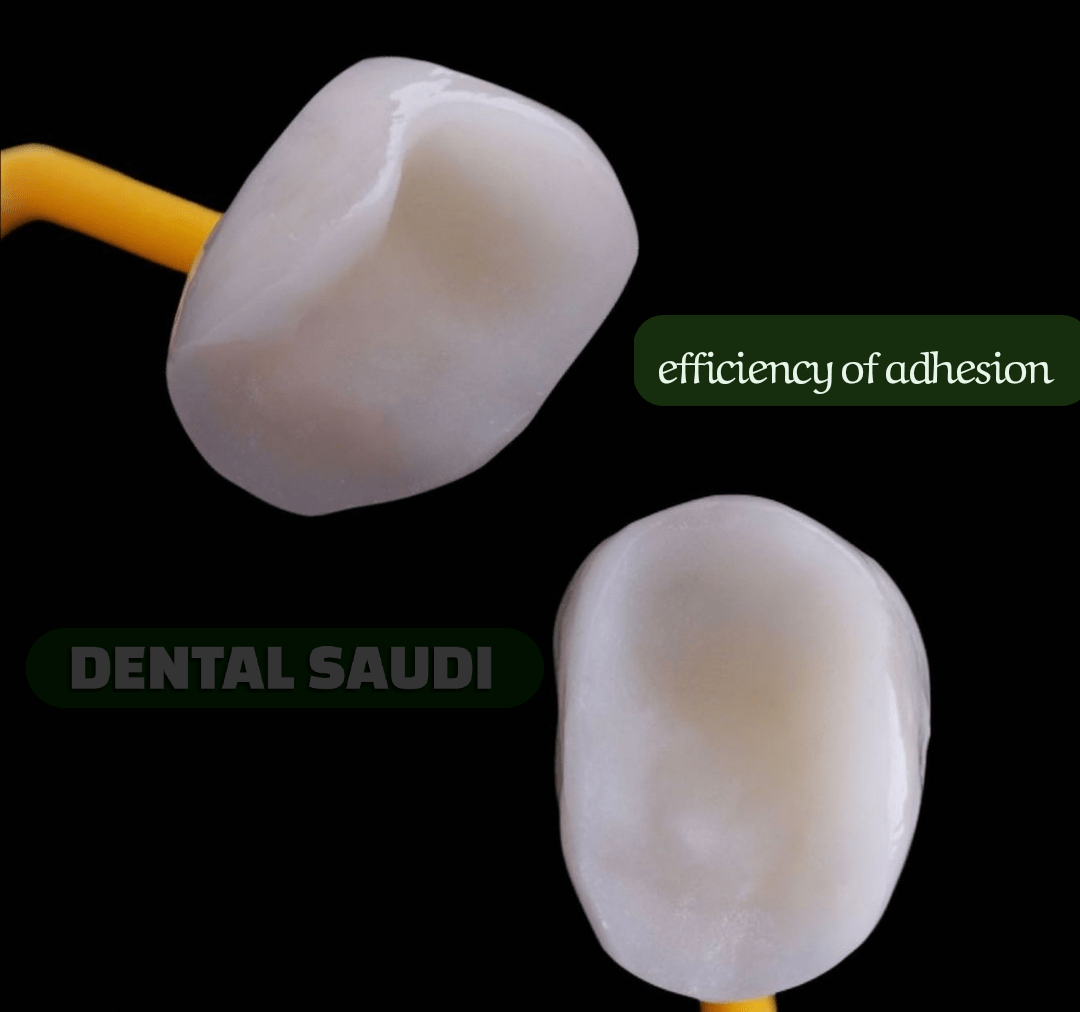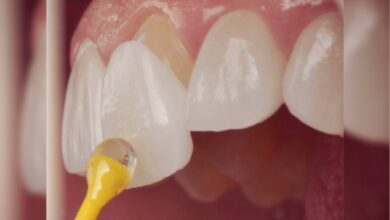
Introduction
An important objective in dentistry is adherence of restorative materials to tooth structure.
It is also important that a restauration in all respects will resemble the
tooth.
It should have the same properties and should bind to the enamel and dentin surrounding it, Bonding agents play a crucial role in the effective sealing and retention of restaurations, which in many countries around the world have increasingly been placed and replaced by dentists, Since 1955, with the implementation of Buonocore’s idea of treating enamel to chemically alter its surface and thus promote the adhesion of filling materials to enamel surfaces, adhesion dentistry has changed and advanced rapidly. This is because adherence is important to counteract and resist the forces of dimensional change during the restoration setting, Foster better retention and Once the restored tooth is in operation marginal seal .
Indication And Advantages Of Adhesive Dentistry
Adhesive dentistry deals with bonding to the teeth’s natural substance, mainly email and dentin, Adhesion to the dental tissue has enabled clinicians to preserve more tooth structure and cut or grind less tissue when making or reconstructing a dental filling, More conservative procedures (lesion specific preparations) Reinforcement of residual tooth structure, Reduced microleakage and Some adhesives have antibacterial properties ,which may prevent recurrent caries.
Dentists nowdays,thanks to adhesive dentistry, have a wider range of treatment options to present to
patients when dealing with restore / fill or repair existing teeth(1).
Dental practice deals with repairing and treating Teeth to give work properly and,
secondary Its aesthetics good.
The key dental therapies The adhesives used are orthodontics and restorements , Expanding Indications for Adhesive Dentistry Restoration of carious teeth , Abraded and eroded surfaces , Veneers (esthetics) ,Recontouring (diastema) , Preventive sealants and treat dentinal hypersensitivity.
In Misplaced orthodontic teeth are realigned to improve Function by force-assigning them using special wires .
Orthodontic devices come in two different kinds, fixed and reShift Appliances(removable ) .
The wires are at- in fixed appliances Touched by brackets to the jaw, and tightened to Use force required.
Traditionally they have brackets
Were mechanically clamped to the teeth but increased They are used with dental
adhesives(2).
Disadvantages of Dental Adhesion that Dentists may mistakenly rely solely on
adhesion as the source of primary retention, even in clinical situations in which there is not enough residual tooth structure, such as a preparation for a core build-up without enamel margins(3).
Types Of Adhesion
1-True Adhesion
it’s involves chemical bonds between the joining materials,such as glass ionomer and zinc polycaboxylate ,but not all bonding to the tooth structures
has true adhesive.
The words “adhesion” and “bonding” will be used interchangeably
in this text but neither will mean chemical bonding (unless mentioned specifically) .
At the joint two materials could form a compound, The strongest joints are where the atoms in both materials share or exchange electrons (known as covalent bonding or ionic bonding, respectively).
A weaker bond is formed when a hydrogen atom in one molecule is drawn into a nitrogen, oxygen or fluorine atom in another molecule, aprocess called hydrogen bonding .
So Chemical adhesion occurs when two distinct surface atoms form ionic, covalent, or hydrogen bonds.
In this sense, the engineering principle behind chemical adhesion
is fairly straightforward, if surface molecules can bond, then a network of these bonds will bind the surfaces together, It bears mentioning that these attractive covalent and ionic forces are effective only over very small distances less than ananometer.
In general, this means not only that surfaces with the capacity for
chemical bonding need to be put together very tightly, but also that such bonds are relatively weak, as the surfaces must then be held close together(4).
2- Mechanical Attachment
micromechanical bonding of dental materials to the structure of the tooth is frequent.
In everyday life also micromechanical bonding occurs when materials such as superglue are used.
Using surface irregularitiess maller than can be seen with the naked eye or felt with a dental explorer, we will define micromechanical bonding.
The product of the micromechanical bonding can be hard to distinguish from the true adhesion.
Macromechanical bonding is common in daily life, as well as in dental practice.
Rughness of the surface can be seen and/or felt with this type of bonding.
Macromechanical bonding is the mechanism by which most glues join two pieces of wood, repair broken toys and do a lot more.
The micromechanical and macromechanical bonding mechanisms are much the same, The difference is they happen on a different scale or physical dimension.
The glue or cement flows onto, and fills, surface irregularities.
The glue then sets or hardens, and it is locked into the surface irregularities of the joining objects.
If the glue is solid then the objects will now be joined together, Those objects are now united.
Micromechanical bonding has the main advantage that a greater number of small surface irregularities are used compared to macromechanical bonding.
Furthermore, stress is distributed more uniformly on the joint with micromechanical bonding , Makes it more powerful than macromechanical bonding. Examples of macromechanical joining of objects at an even greater scale are screws, nails, nuts , bolts, and other fasteners.
With this type of joining, stress in the vicinity of the fastener is greatly concentrated.
In dentistry, macromechanical bonding is applied with “nonadhesive” cements to
cement or luting crowns and bridges to teeth or amalgam, Dental cements fill in the ruggedness of the tooth surface and the crown inside.
The crown is luted in place or glued in the same way as two pieces of wood are glued together(5).
conclusion
Adhesion to tooth structure have great important in reinforcement of residual tooth structure and another advantages, true adhesion is better than mechanical adhesion and occurs by chimcal bond when there is intimate contact between the joining materials, so intimate contact happen by wetting, the adhesive flow in to surfaces irregularities that is clean from debris and contamination, the two substrate surface have the same coefficient of thermal expansion to prevent thermal stresses, bonding
to enamel is easier than dentin and to superficial dentin better than deep dentin .
References
1-What is Adhesive Dentistry? – International Academy for Adhesive Dentistry [Internet]. Adhesivedentistry.org. 2020 [cited 20 May 2020]. Available from:
2-Nicholson J. Adhesive dental materials—A review. International Journal of
Adhesion and Adhesives. 1998;18(4):229-236.
3- Dental Adhesives: Universal, Self-Etch, Total-Etch | 3M-US | 3M United
States [Internet]. 3m.com. 2020 [cited 21 May 2020]. Available from:
https://www.3m.com/3M/en_US/company-us/all-3m-products/~/All-3M-
Products/Dental-Products/Dental-
Adhesives/?N=5002385+8710730+8711017+8713393+3294857497&rt=r3
4- Kendall K. Adhesion: Molecules and Mechanics. Science.
1994;263(5154):1720-1725.
5- Adhesive Materials [Internet]. Pocket Dentistry. 2020 [cited 21 May 2020].
Available from: https://pocketdentistry.com/adhesive-materials/
